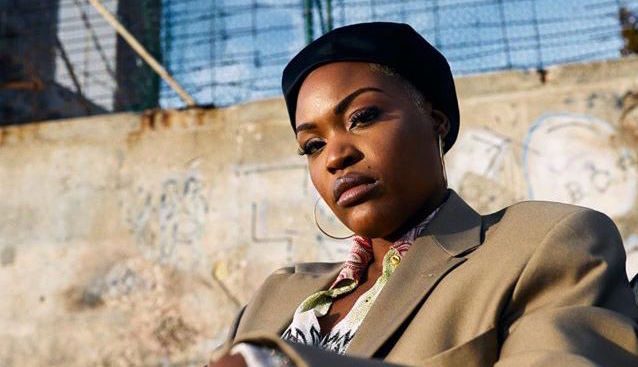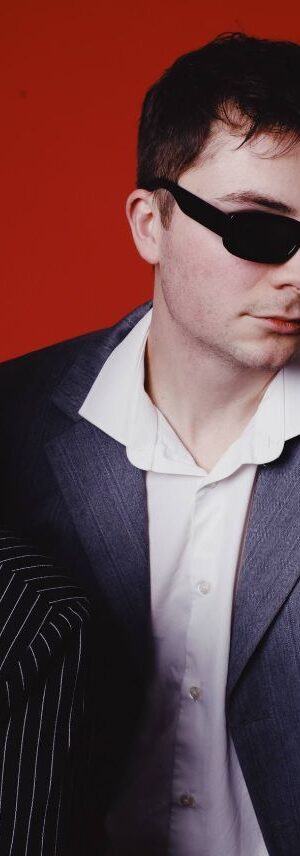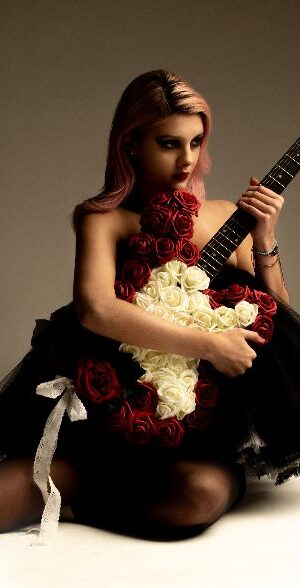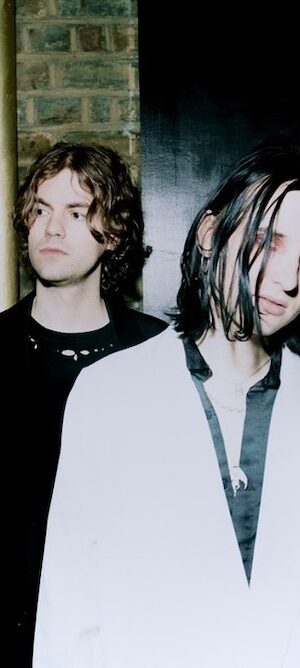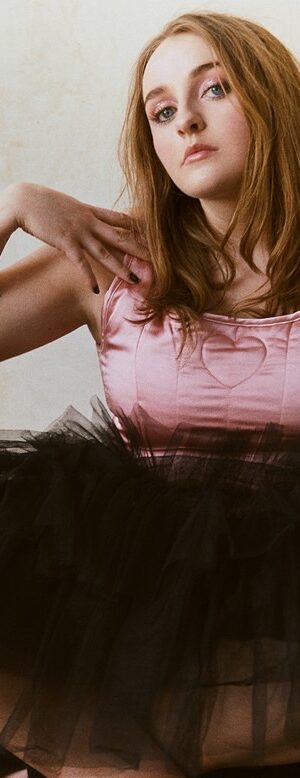TMR TALKS TO...
PONGO
In this interview feature, we get to know the most radicalist up and coming stars on the planet.
This time we’re chatting with Pongo, the Angolan-Portuguese artist on her kuduro-inspired EP, UWA.
Pongo was born in Angola’s capital city Luanda, although at age eight, she was forced to flee her home country to escape the country’s lengthy and harrowing civil war. Pongo and her family later settled in just north of Lisbon in Portugal, amongst a small African-immigrant community which kept her connected to her heritage although did not protect her from prolonged racial abuse at school. As a way to escape the harassment, Pongo sought solace in music, dance and the slang words remembered from her childhood in Luanda. The real turning point for this instinctively creative person came when she encountered the Denon Squad, a group of boys practising kuduro dance on the streets of one of Lisbon’s largest African communities. She began rapping over those dance routines and before too long a tape of Pongo’s recordings made its way into the hands of Lisbon-based club night turned kuduro collective Buraka Som Sistema. Pongo (taking her artist name in tribute to feminist Congolese singer, M’Pongo Love) then went on to make her debut on Buraka Som Sistema’s Black Diamond album, alongside the likes of M.I.A. and Kano.
Now, Pongo shares her latest work - the UWA EP. This collection of five tracks marks an artistic evolution which appeals to what Pongo refers to as “life balance”. Below you’ll discover more about this self-styled direction, the EP, her music videos and her unending appreciation for the infinite beauty of the African people.
TMR: We recently wrote about the video for your single ‘Uwa’. The filming for which was reportedly the first time you’d returned to the African continent since leaving aged eight. How was that experience?
The video for the single ‘Uwa’ was filmed in Senegal in Dakar. There were options to shoot in Angola, Uganda and Nigeria too, but our plans changed due to the lack of particular conditions that we needed to make the video. It was an equally incredible and exciting experience since I hadn’t returned to any other African soil since I was 8 years old. I loved shooting in Dakar with a fantastic local team where I was very well received by the affection and support of this part of French-speaking Africa. I felt completely at home in the environment that reminds me a lot of Angola, from the smell of the streets to the reception from the people - the whole atmosphere made me feel the nostalgia of how everything had to be done in Angola. My experience of Senegal reminds me that every African it is part of Africa regardless of which part of the world you were born or grew up in!
TMR: The video features loads of dancing, fashion, and vibrant colours. Do you take inspiration from the artist nature of Angolan culture?
I am inspired by the artistic nature of Africa's culture globally. Fashion, dance and vibrant colors are present throughout Africa, we exude the same energy and feelings.
TMR: Why did you choose to work with the French photographer Lou Esobar for the video?
I chose Lou Esobar for the video for several reasons. She is a strong woman and has an indomitable character, very inspiring. I immediately identified with the warm colours that she presents in her photos, the reddish orange that reminds me of the red soil of the streets where I played as a child in my home country of Angola. I immediately realised her fascination with Africa - she combines the colourful spirit of Africa with her personal touch of glamor and with.
She accomplished exactly what the ‘Uwa’ video intended - to exalt the infinite African beauty, from the extras, styling and the scenery. With a great team involved in this beautiful work we did it and this great team helped me a lot to show the most beautiful spots in Africa that I needed to complete the other half of my music.
TMR: As those who are familiar with your music will already know, ‘Uwa’ is also the title-track for your EP, released back in February. What’s the reaction to the EP been like so far?
I have felt that the UWA EP was very well received by the public, as well as the objective of making known the different facets of my artistic side, with a diversity of sounds and rhythms from different musical styles.
TMR: How was your music changed from the Baia EP to the UWA EP?
From my first EP, to the second EP is nothing less than a preparation for what you can expect for my first album to now have the diversity that you will recognize from various facets of your PONGO. The EP UWA is my artistic evolution that I have been developing with each lived experience and a global vision of the world, that in which each theme has a message. The appeal for what I call “life balance” (Health, Peace and Love) in continuing the mixture of cultures and sonorous rhythms that allowed me to experiment with Latin rhythms as well, which I have developed in my compositions for a long time. The message of the struggle for global freedom, the call for attention to various social issues such as Portunhol (which is a language mixing of Portuguese and Spanish) in the song ‘Canto’, which expresses the love and pleasure I have in making music. Portunhol is considered Creole, used between Brazilian and Venezuelean borders. Not only that, for me it is a symbol of freedom for people who cross borders is one of the phenomena of living is beyond borders.
TMR: Your multilingualism is seriously impressive! Throughout the EP we hear you rap in Portugeuese, English and Kimbundo. Do you think more artists from diverse backgrounds should showcase the beauty of their different languages?
As artists who have the opportunity to elevate our culture around the world, I fully agree that more artists from different backgrounds must show the beauty of their different languages. It's part of our identity, it is important to take the information that people from different parts of the world have long been searching for their own origins in this way. From music we can help to praise the infinite work of researchers, and historians who investigate and publish books including dictionaries of native languages.
TMR: You’re also a great advocate for kuduro, and so who are you favourite artists from that genre?
In this genre of kuduro my favourite artists are: Noite e Dia, Os Lambas, Propia Lixa, Sebem, Bruno M, Os Xtrubantu and others.
TMR: Let’s talk about the powerful ‘Quem Manda No Mic’, which tells the story about how you started out in music. Why did you want to put that time in your life into a track?
'Quem manda no Mic' is closer to the genuine Kuduro from which I sought my freedom of expression from a very early age. I wanted to show this time in my life to share my trajectory with the world, and especially to present the track as a celebration of the results of a long period of hard work so far.
TMR: ‘Wafu’ is a state-of-the-nation plea to fellow Africans for unity, tolerance and peace. Is this a voice that’s rising up throughout music and the creative arts right now?
I understand that for a long time that several artists have taken the message for a better Africa to the world. There are voices that are already found in the creative arts, such as Miriam Makeba, Fela Kuti, Tina Turner, Diana Ross, Ray Charles, Stevie Wonder, Bob Dylan, Cyndi Lauper, Bob Marley, projects like “SWU” by Bob Geldof “USA for Africa” performed by big names like Michael Jackson, Lionel Richie, Quincy Jones etc ... Nowadays the Nigerian artist Burna Boy, who I really appreciate, also brings the same message. It is a great list of artists, and I as a daughter of the African continent, am doing my part in the search for the best for our continent and for the world we need much more.
By Hannah Thacker
Photo credit: Felix Dol Maillot
